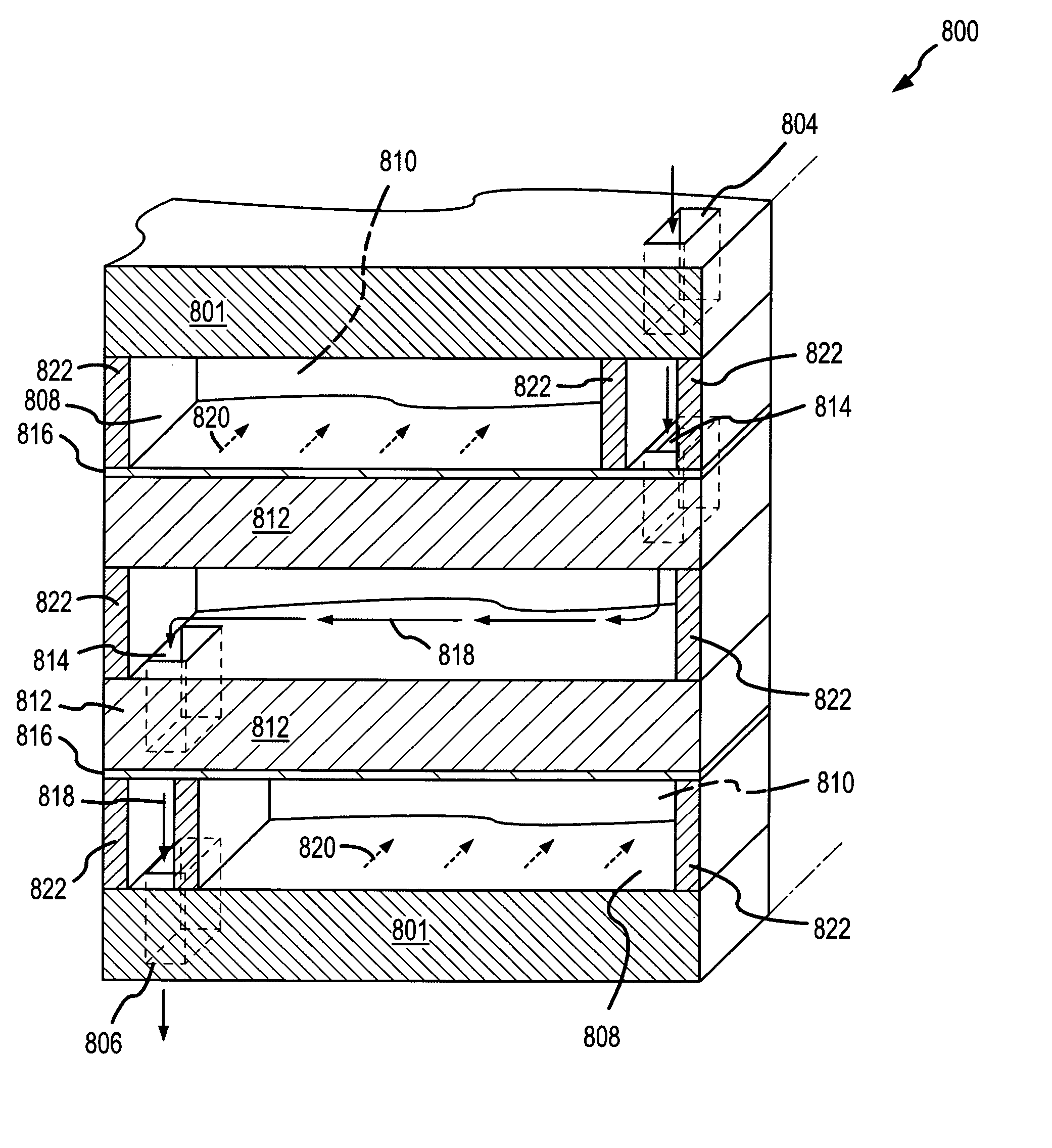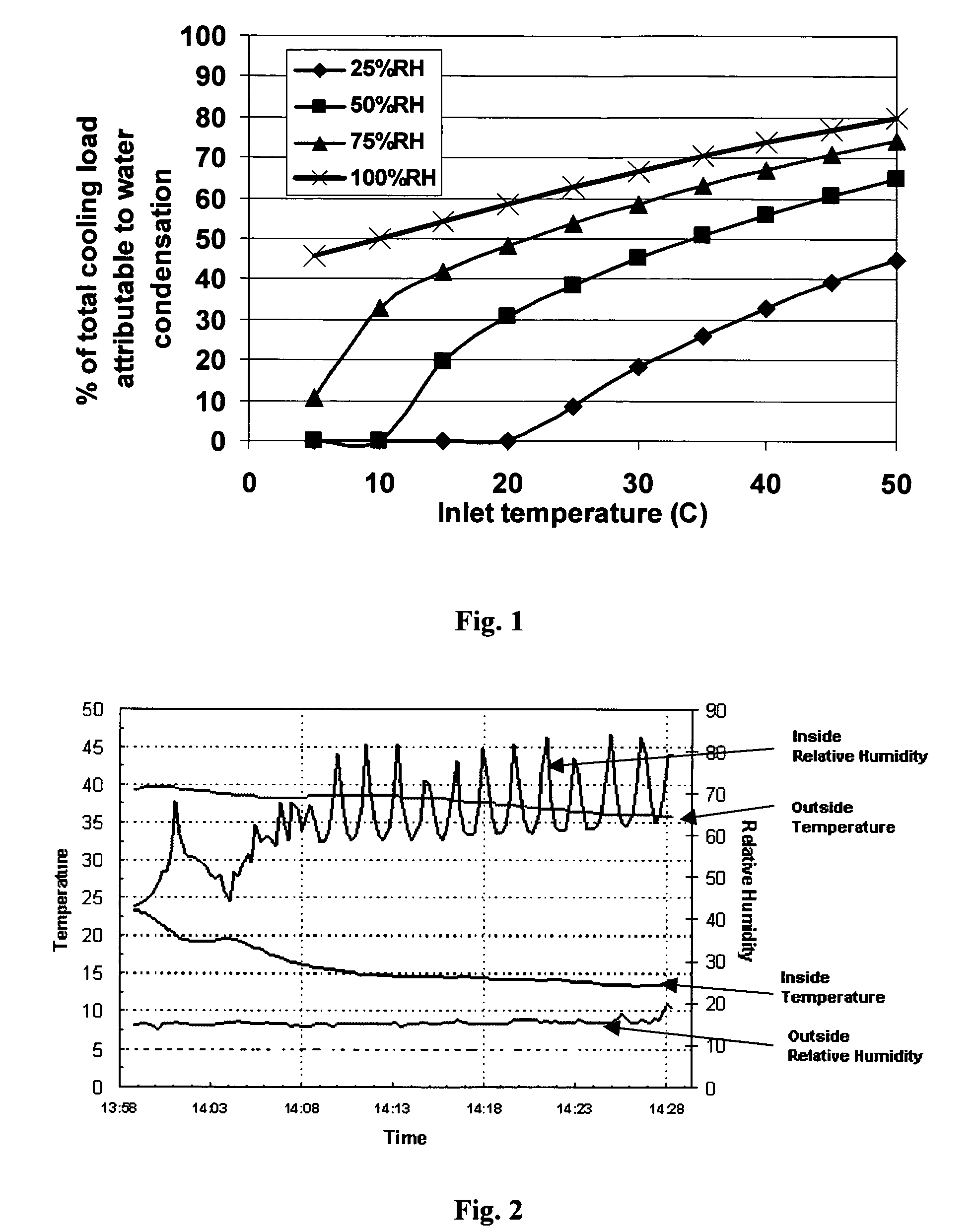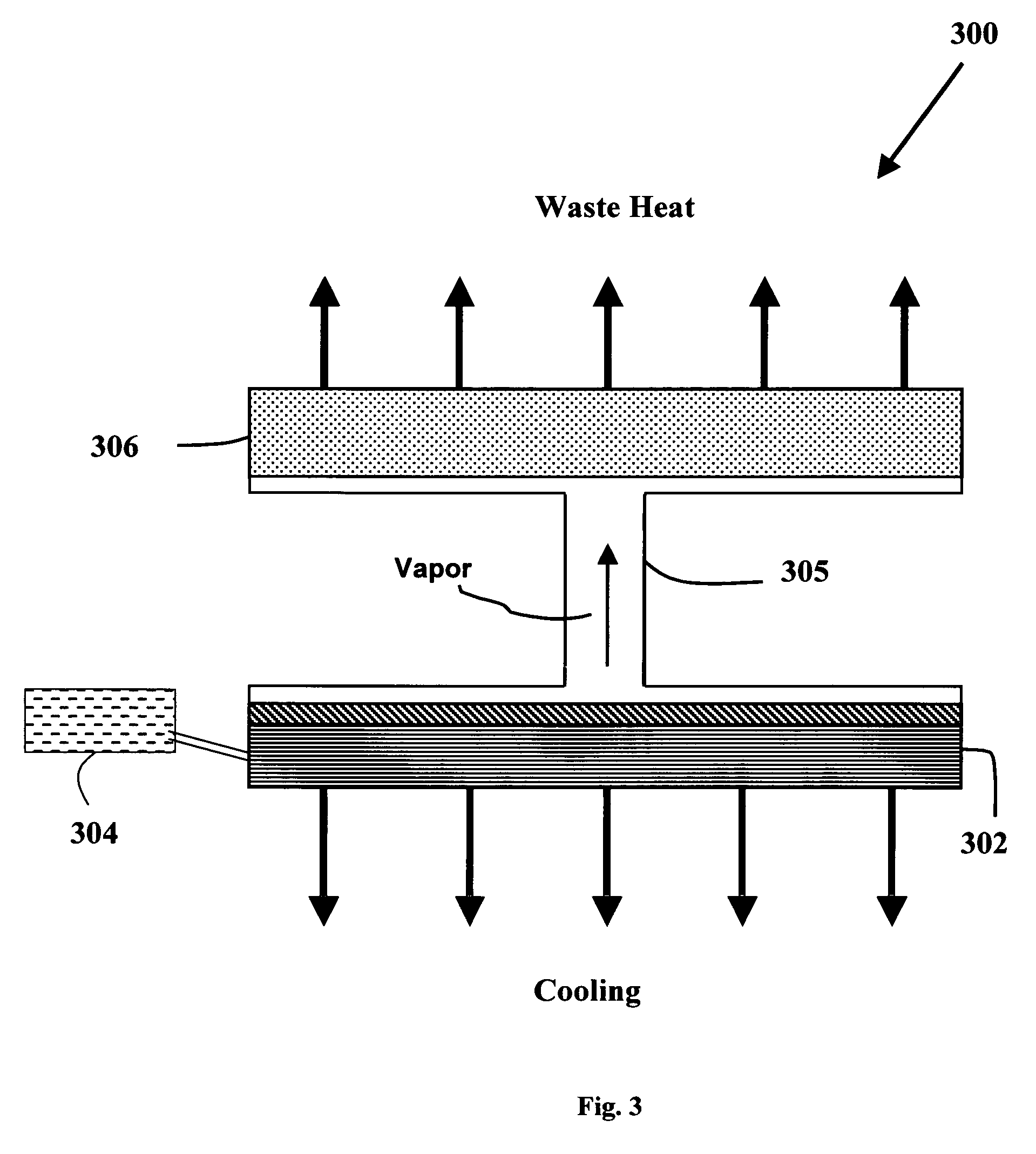Sorption cooling systems, their use in automotive cooling applications and methods relating to the same
a cooling system and a technology for automobiles, applied in the field of sorption cooling systems, can solve the problems of air-conditioning a car, truck or other motorized vehicle that consumes a non-trivial amount of engine motive power, affects both fuel efficiency and engine emission levels, and gives a clearly perceptible decrease in vehicle performance, etc., to achieve the effect of reducing the volume needed, high heat rejection rate, and high adsorption ra
- Summary
- Abstract
- Description
- Claims
- Application Information
AI Technical Summary
Benefits of technology
Problems solved by technology
Method used
Image
Examples
example 1
Water Adsorption Isotherms for Desiccant Materials
[0167]Water adsorption isotherms were measured at 25° C. for CaCl2-based and LiCl-based desiccant materials. The results are depicted in FIG. 21. Although both desiccant materials perform similarly at less than about 10% relative humidity (RH), at higher humidity the LiCl-based material was more adsorbent.
example 2
Performance of a First Adsorbent Bed Having 64 Adsorption Sections
[0168]An adsorbent bed having 64 adsorption sections was fabricated (an adsorption section is defined by the number of apertures and spacing materials per sheet and their physical relation to one another). An air stream at 35° C. and 95% RH was flowed through the adsorbent bed, and the outlet temperature and humidity were measured over time. The measured cooling rate and cooling capacity are illustrated in FIG. 22.
example 3
Performance of a Second Illustrated Adsorbent Bed Having 64 Adsorption Sections
[0169]An adsorbent bed having 64 adsorption sections was fabricated (an adsorption section is defined by the number of apertures and spacing materials per sheet and their physical relation to one another). An air stream at 35° C. and 95% RH was flowed through the adsorbent bed, which included a CaCl2 desiccant material, and the outlet temperature and humidity were measured over time. A total of six runs were conducted. Table 2 summarizes the results. Measured inlet and outlet temperatures and measured inlet and outlet relative humidity for one test are depicted in FIG. 23. The measured cooling rate and cooling capacity for this test are depicted in FIG. 24. The sorption cooling system averaged about 320 watts of cooling over 30 minutes, with a cooling capacity of 157 W-Hr.
[0170]
TABLE 2Performance of A Second Adsorbent Bed Having 64 Adsorption SectionsSurfaceCoolingModi-AirWaterOut-AverageCapaci-ficationfl...
PUM
 Login to View More
Login to View More Abstract
Description
Claims
Application Information
 Login to View More
Login to View More - R&D
- Intellectual Property
- Life Sciences
- Materials
- Tech Scout
- Unparalleled Data Quality
- Higher Quality Content
- 60% Fewer Hallucinations
Browse by: Latest US Patents, China's latest patents, Technical Efficacy Thesaurus, Application Domain, Technology Topic, Popular Technical Reports.
© 2025 PatSnap. All rights reserved.Legal|Privacy policy|Modern Slavery Act Transparency Statement|Sitemap|About US| Contact US: help@patsnap.com



